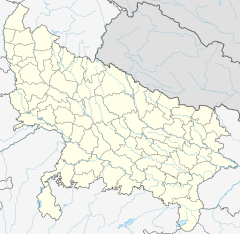| Jama Mosque, Fatehpur Sikri | |
|---|---|
 | |
| Religion | |
| Affiliation | Islam |
| Location | |
| Geographic coordinates | 27°05′42″N 77°39′46″E / 27.09500°N 77.66278°E |
| Architecture | |
| Type | Congregational mosque |
| Style | Indo-Islamic, Mughal |
| Founder | Akbar |
| Specifications | |
| Length | 165.20 m |
| Width | 133.60 m |
| Dome(s) | 3 |
| Materials | Sandstone, marble, slate |
The Jama Masjid is a 16th-century congregational mosque in the UNESCO World Heritage Site of Fatehpur Sikri, located in Uttar Pradesh, India. It was built by Mughal emperor Akbar, and was the largest mosque in the empire at the time of construction. The Jama Masjid's design drew from earlier mosques built by various pre-Mughal sultanates, and served as an important precedent in subsequent Mughal architecture.
Notable monuments in the mosque complex include the Buland Darwaza, which acts as the mosque's southern gate, and the Tomb of Salim Chishti, a saint in whose honour the mosque was constructed.

